New York—This December, Sotheby’s will offer a single-owner collection of design-driven jewels it calls one of the “most incredible private collections of jewelry in recent memory.”
“A Legacy of Elegance: Jewels from an Exceptional Collection” comprises more than 60 pieces spanning the 1930s to the 1990s, with a focus on Parisian jewelry houses, such as Cartier, Boivin, and Boucheron, offering a “rare lens” on Paris, said Sotheby’s.
It is expected to garner more than $8 million total.
The collection was assembled over the course of many decades, the auction house said.
At the heart of the collection are jewels by modern-era visionary designers Joel Arthur Rosenthal (JAR) and Suzanne Belperron.
These artists changed the course of jewelry design over the last century “through extraordinary imagination, technical mastery, and a renegade’s confidence,” according to Catharine Becket, Sotheby’s global head of high jewelry.
“Though created decades apart, their jewels were—and in the case of Mr. Rosenthal, continue to be—conceived for those who appreciate the unconventional, the unexpected and, in many cases, a flourish of eccentricity.”
Becket continued, “This is a collector who, in possession of great scholarship and passion, has focused on the very best examples in all art forms, prioritizing rarity, originality, and superlative artistry.”
A highlight of the sale is a colored gemstone and diamond necklace by Suzanne Belperron. It is estimated to sell for $250,000 to $350,000.
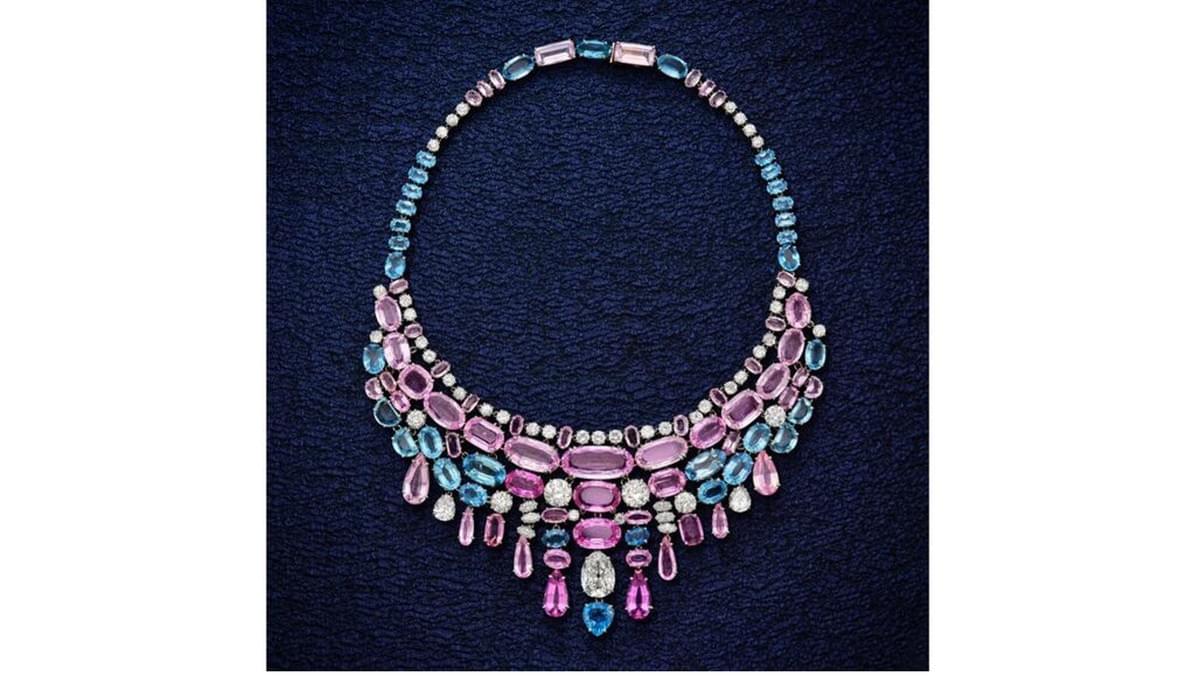
This necklace is one of more than 20 works by Suzanne Belperron in the offering.
Made with pastel pink topaz and cool blue aquamarine, as well as morganite and diamond, the piece exemplifies the unprecedented combinations of stones and minerals and exceptional color contrasts the designer was known to favor, said the auction house.
A variation of the designer’s bib necklaces, it features faceted gemstones and “a delicate fluidity of construction.”
Belperron’s hallmark bold, sculptural style and signature aesthetic is seen in another piece on offer—a chalcedony and amethyst cuff, which is estimated to sell for $80,000 to $120,000.
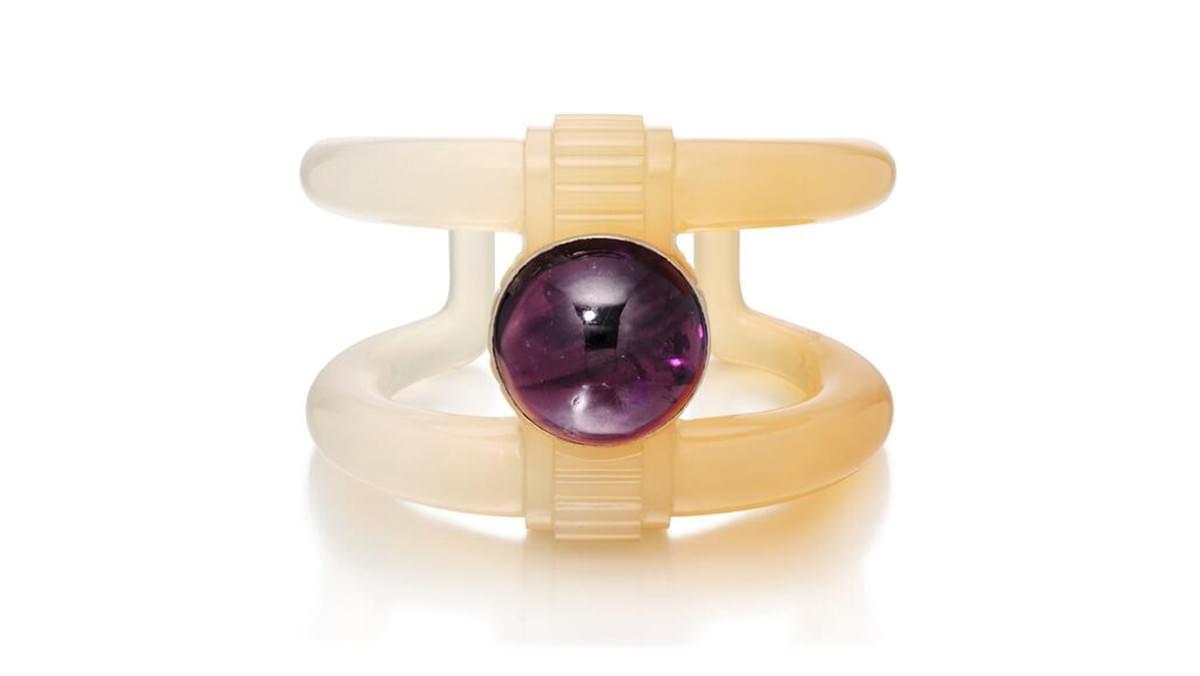
In this cuff, Belperron’s confidence is translated through the use of unorthodox materials and a machine-age, almost masculine aesthetic, the auction house said.
Belperron was one of the few female jewelry designers and makers of her time, said Sotheby’s, creating jewelry from the 1930s to the mid‐1970s.
She never operated a storefront, relying on word-of-mouth among her clientele, which included Elsa Schiaparelli, Diana Vreeland, and the Duchess of Windsor, as well as other royal families, financial magnates, Hollywood stars, and other members of the intellectual and artistic elite.
The designer never signed her jewels, known for her declaration, “My style is my signature.”
Based in Paris, she began her career at René Boivin in 1919, staying until 1932.
A Boivin sapphire and diamond brooch on offer shows “the clear influence” of Belperron, the auction house said.
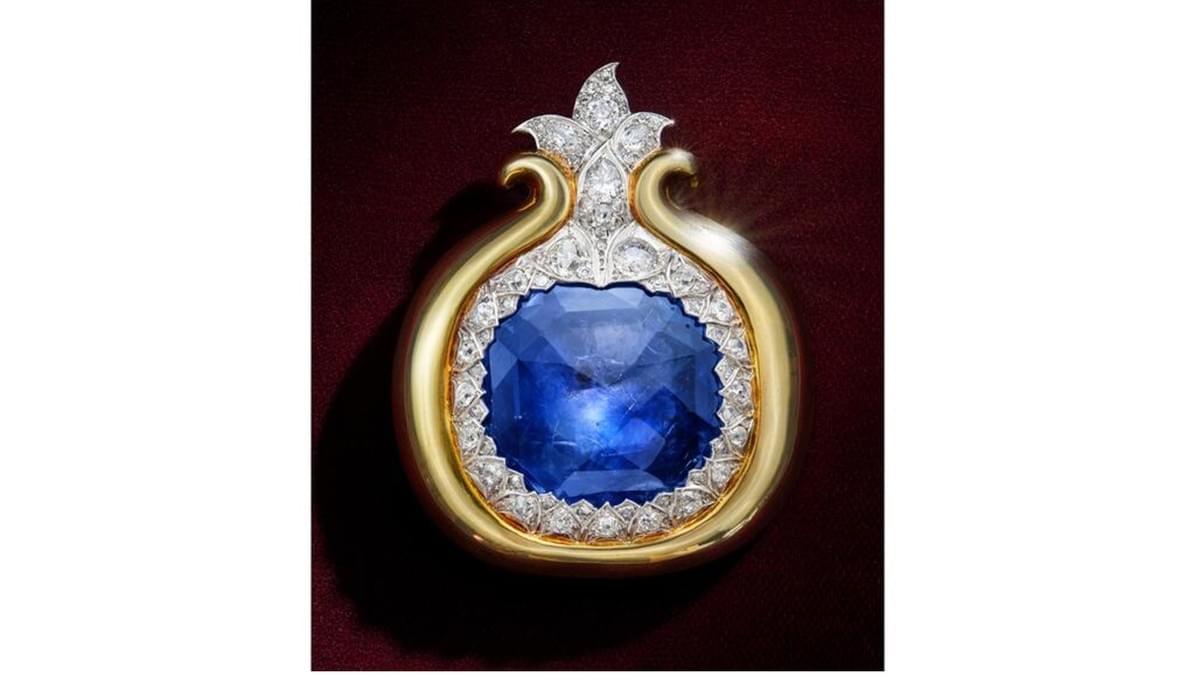
This Boivin “Grenade” brooch was once in the collection of tastemaker and jewelry collector Daisy Fellowes, an avid Boivin patron who was drawn to naturalistic and fantastical forms.
The piece, estimated to sell for $40,000 to $60,000, once belonged to Daisy Fellowes (1890-1962), a French socialite and heiress to the Singer sewing fortune.
The collection also features more than 10 jewels by JAR, one of the most powerful and revered names in jewelry design today, according to Sotheby’s.
A pair of diamond earclips, estimated to sell for $500,000 to $700,000, leads the ensemble.
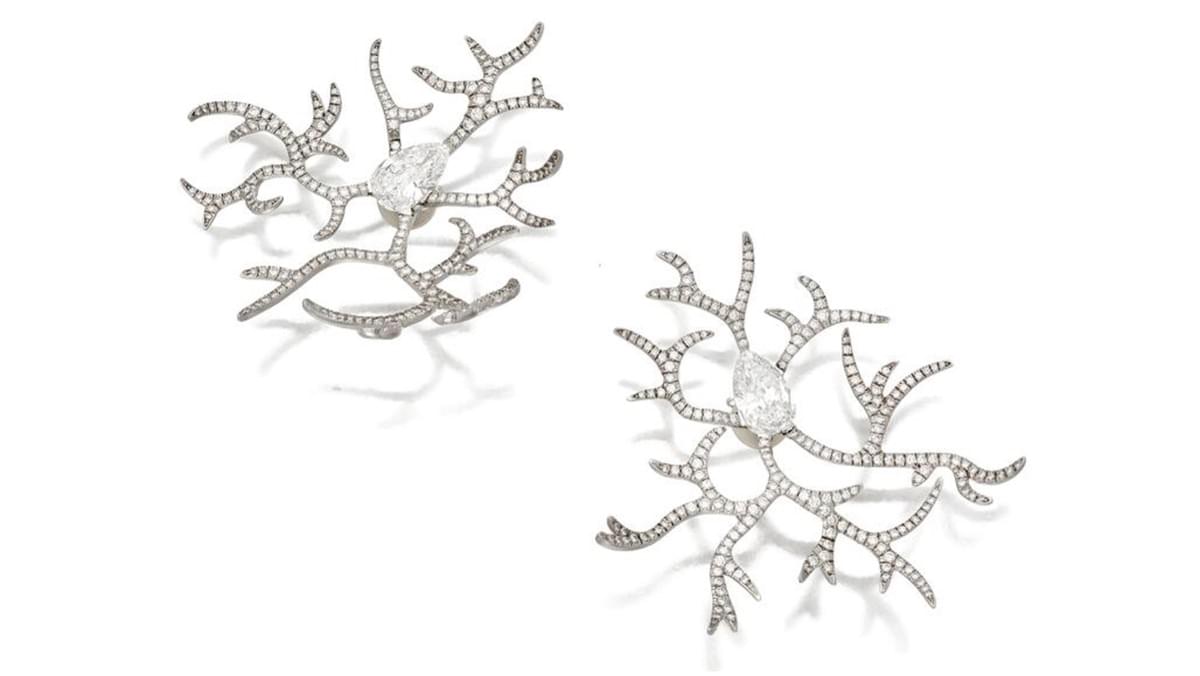
“The imposing scale of these JAR earclips is countered by the fragility of dendritic branches evoking the ephemeral nature of frost,” Sotheby’s said.
These earclips, as well as several of the other JAR pieces on offer, were displayed at the artist’s 2002 exhibition at London’s Somerset House.
A New York City-born designer working in Paris, Rosenthal has become “the byword for the ultimate in near-untouchable artistry in gems and precious metals,” the auction house said.
Since beginning to create his own designs in the 1980s, the designer has introduced a depth of meaning, cultural layers, beauty and poetry, and poignancy that Sotheby’s said had been missing in precious jewelry for decades.
His designs are known to be otherworldly, often surrealist, regarded as wearable works of art, and he produces fewer than 100 pieces a year.
Rosenthal is the first living jeweler to have a retrospective at The Metropolitan Museum of Art.
The museum described him as a “contemporary artist of gems,” known for his painterly selection of gem-color, mixing stones to create subtle gradations or vibrantly arresting contrasts, Sotheby’s said.
His three “Wild Rose” brooches on offer, estimated to achieve up to $1.2 million total, are designed as blooms set with colored stones centered by natural pearls.
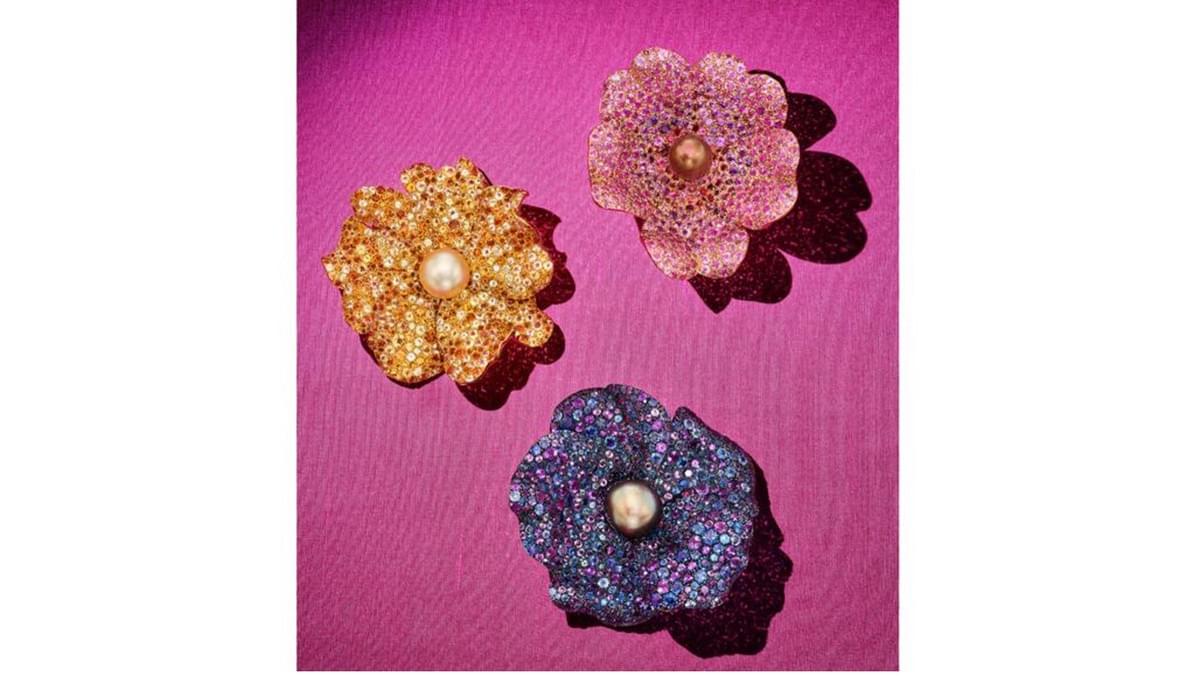
These JAR brooches are made with pavé-set (from top to bottom) pink and purple sapphires and garnets; citrines and yellow sapphires; and amethysts and sapphires.
Sotheby’s noted that Rosenthal may be credited with igniting a “pavé-set revolution,” a technique now considered foundational to jewelry design of the 21st century.
“A Legacy of Elegance” will also feature a ruby and diamond laurel leaf necklace by Boucheron that passed through the collections of two notable American women who the auction house said “conquered international high society.”
Set with approximately 40 carats of rubies and 65 carats of old-cut diamonds, it is estimated to achieve $1 million to $2 million.
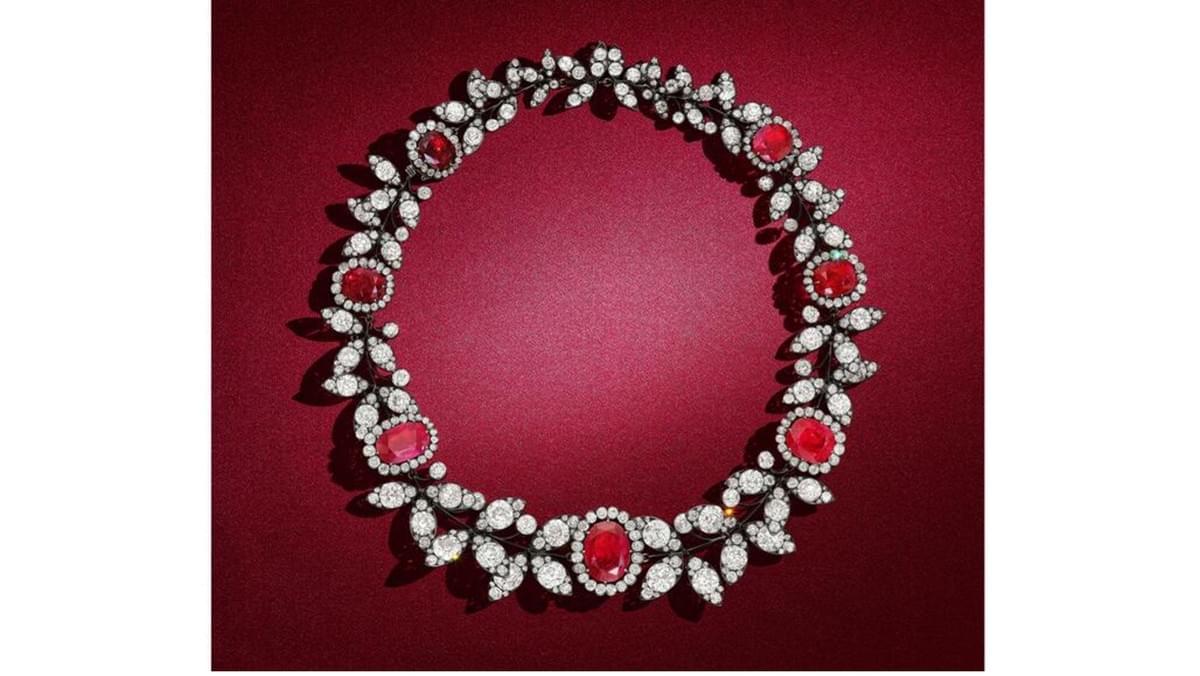
This Boucheron ruby and diamond necklace, circa 1888, is estimated to fetch up to $2 million.
It once belonged to Mary Louise Hungerford Mackay (1843-1928), wife to John Mackay, an industrialist who rose to wealth during the Gilded Age, amassing his fortune via silver mining and the telegraph and railway industries.
The couple, snubbed by New York society, left for Paris, where they hosted lavish parties, at which the hostess would display her jewels, many of which were from Boucheron.
The necklace was later acquired by Countess Mona Bismark (1897-1983), a figure who achieved her social status through a series of noteworthy marriages and was widely regarded for her beauty and elegance.
The piece appeared in a 1986 Sotheby’s auction of the Countess’ jewelry, but it bore no signature and was therefore offered without an attribution. It was identified three decades later by Vincent Meylan, author of the 2011 book “Boucheron: the Secret Archives,” who placed the necklace on the cover.
Another highlight of the collection is a Cartier invisibly-set ruby and diamond bracelet.
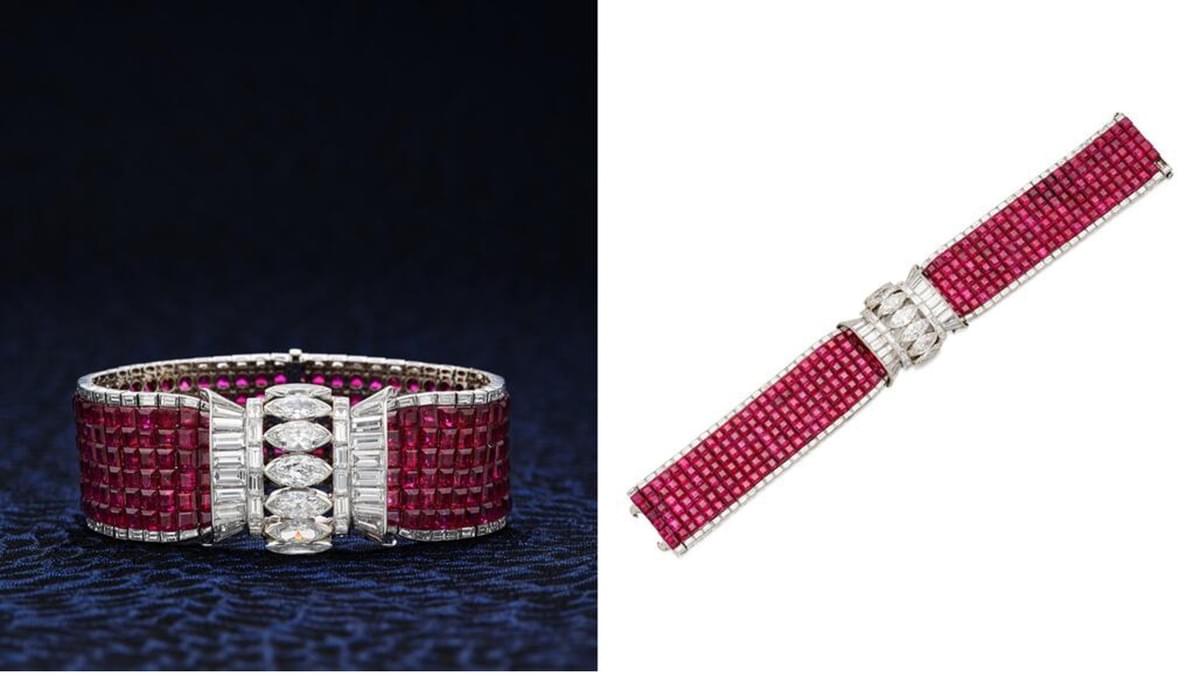
An invisibly-set ruby and diamond bracelet by Cartier
It is estimated to sell for $300,000 to $500,000.
The style is reminiscent of Cartier rival Van Cleef & Arpels' designs. Though both firms applied for a patent for the technique in 1933, Cartier eventually did away with the method.
The bracelet bears the mark of Rubel Frères, a Parisian workshop known for its Art Deco creations for Van Cleef & Arpels.
“This collection stands out for its compelling variety of characteristics—rarity, distinguished authorship, impeccable provenance, and above all, iconic design. It is a true celebration of connoisseurship, showcasing the finest jewels and artisans from the late 19th century through to the present day,” said Quig Bruning, Sotheby’s head of jewels, Americas and EMEA.
“Assembled with both passion and joy, these treasures were clearly deeply cherished and lovingly worn by their owner. Today, this exceptional collection takes its place alongside some of Sotheby’s most celebrated jewelry legacies in recent memory, including those of Mrs. Paul (Bunny) Mellon, Evelyn and Estée Lauder, Brooke Astor and Jayne Wrightsman.”
The sale will headline Sotheby’s inaugural luxury auctions at its new global headquarters in the historic Breuer building on Madison Avenue in New York.
Set for Dec. 8, it will be the first evening jewelry auction at Sotheby’s New York in more than a decade and the first to be held at the Breuer building.
Select highlights will go on a worldwide tour prior to an exhibition at the Breuer building beginning Dec. 5.
